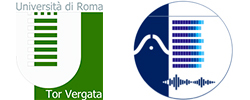COURSE DESCRIPTION:
The course explores an overview of music theory with advanced applications of music analysis and composition. Frequent assignments and analysis of music will focus on the creation and development of germinal materials, structure, metric/rhythmic flow, concepts of consonance and dissonance, melodic invention, harmony, color and orchestration. Class sessions will involve readings, practical assignments, music listening, analysis and discussion of an array of music genres. Students will be involved with group critiques.
LEARNING OBJECTIVES:
Students will:
– Consider and review the basic rudimentary elements of music to acquire a deeper and more competent fluency of the rudimentary elements of pitch, intervals, scales, keys, and chords.
– Analyze scores from varying stylistic periods examining melody, rhythm, harmony, form, and instrumentation.
– Deepen skills in and understanding of analysis and/or composition of music in the style of the Common-Practice, Post-Common-Practice periods to the present.
– Gain additional understanding of advanced theoretical or compositional techniques.
– Strive for enlightened understanding of the aesthetic and formal beauty of the Western European musical language and begin to acquire a deeper appreciation of the great works of art that exemplify and embody its expressive power.
STUDENT LEARNING OUTCOMES:
Students will:
– Execute the proper pitch, scales, and chords in all keys. 1.1
– Acquire and demonstrate an understanding of the structural, formal, and procedural workings of Western European tonal music. 1.2
– Complete course assessment instruments demonstrating an understanding of how melody, rhythm, harmony, form, and instrumentation are used to effectively analyze music from the various stylistic periods. 2.1
– Complete analysis assignments from differing style periods that demonstrate their ability to interpret the score. 2.2, 4.2, 5.1, 6.1
– Produce a minimum of two music assignments of 28 measures which demonstrate an understanding of music theoretical concepts and selected musical forms. 6.2
– Complete theory assignments such as realizing figured bass and demonstrating notational skills both on computer and by hand. 4.1
– Execute correct analysis of excerpts from the standard classical repertoire to repertoire of the present day, correctly identifying musical structures. 5.2, 6.3
– Execute the principles of conventional voice leading that contextualize these elements into coherent musical statements, especially as they apply to the primary triads in root position and first inversion, as well as the dominant seventh chord in root position. 1.3, 4.1, 5.1, 6.4
COURSE STRUCTURE:
This web course will be flexible in managing the various learning circumstances of individual students.
Each topic presented will have readings, music literature listening review and discussion, and activity. Activity assignments can be arranged on three learning levels: novice, intermediate, and master in sonic arts level, depending upon the level of student need.
HARDWARE AND SOFTWARE:
As students familiarize themselves with the course, downloads for text, tests and assignments will be available.
REQUIRED TEXTBOOKS:
1.) Music in Theory and Practice. Vol. 1 8th ed. McGraw-Hill Publishers. 2008 *Free. Download
2.) http://openmusictheory.com/ – a free resource
3.) Music in Theory and Practice. Vol. II 8th ed. McGraw-Hill Publishers. 2008
RECOMMENDED:
1.) Harmony: Fifth Edition by Walter Piston, Mark DeVoto (editor)Norton Publishing ISBN-10: 0393954803
2.) The Elements of Music: Concepts and Applications; 2nd ed. Vol. 1 by Ralph Turek; McGraw Hill College Div; ISBN 00770654743
3.) Introduction to Post Tonal Theory by Joseph N. Straus; Prentice Hall, Englewood Cliffs, New Jersey,ISBN 0-13-686692-1
